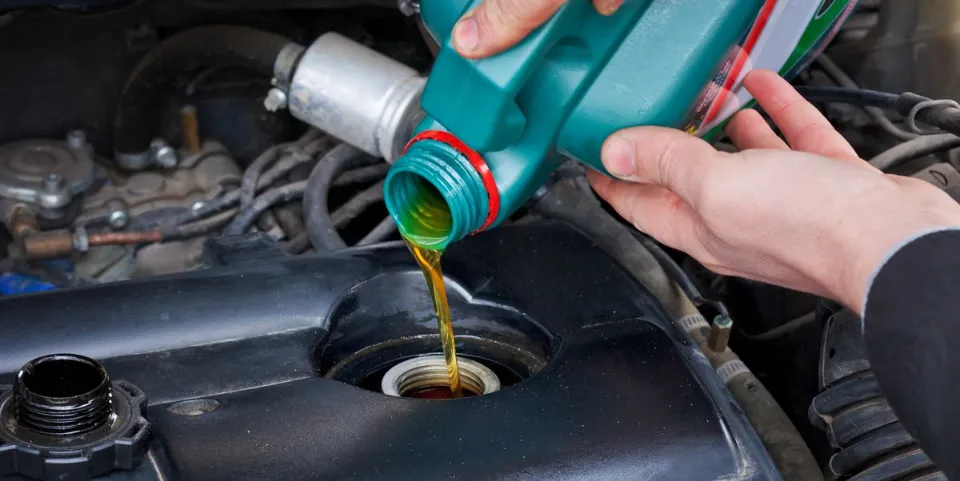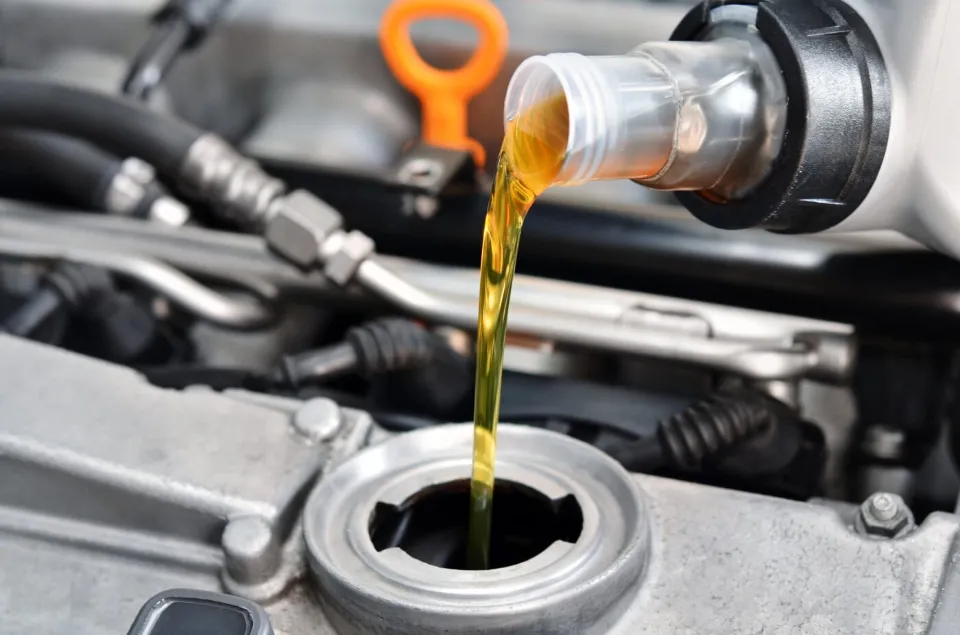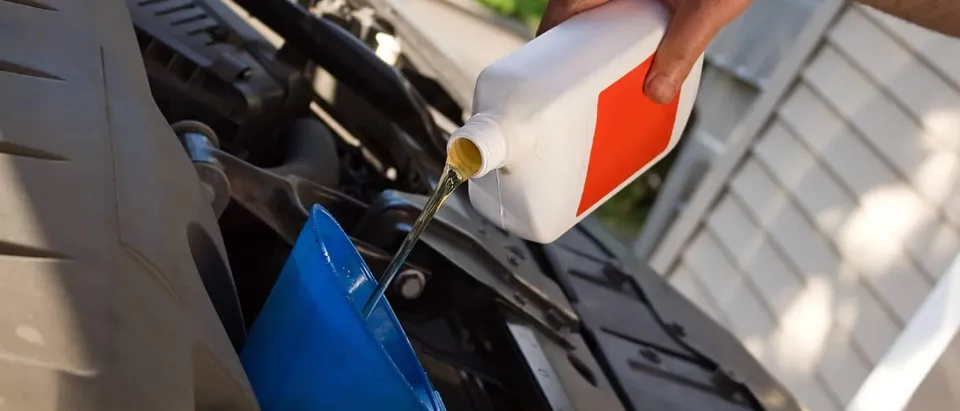Have you ever had to wait two hours to get your oil changed at a dealership? You are probably wondering why the maintenance task might take longer to complete than usual.
An oil change service from a qualified mechanic or technician at a dealership or repair facility takes 30 to 45 minutes.
How Long Does It Take to Get Your Car’s Oil Changed?
One of the most straightforward car maintenance tasks is changing the engine oil. Additionally, DIY enthusiasts like to complete it. If you’ve never tried it before and are reading this article, you might be wondering if it’s worth the effort.
Let’s begin by looking at the various options that are available to you, going from the quickest to the slowest.

Oil Change at An Express Service Garage
Going to a “Quick Lube Shop” is arguably the fastest and most effective way to get an oil change.
The average time for an oil change at an express oil change shop is only 20 to 30 minutes.
Depending on the franchise, these “express shops” often offer you the option to remain inside the car during the process.
From a cost perspective, “quick lube” shops are also the cheapest service option available. They are not, however, always the best choice.
Express shops are typically able to provide quick service because of a unique device that literally suckers engine oil through the dipstick tube.
They don’t have to wait for the oil to drain or unscrew the plug on the oil pan. When the oil filter needs to be changed, the operator uses the machine to remove the old oil and then adds the fresh oil.

There is nothing else to say. Unfortunately, this is frequently not the best method for performing an oil change. Depending on engine design you can leave too much “old” oil in the vehicle, that simply can’t be accessed by the pump.
Additionally, there’s a chance that some dirt and sludge won’t get cleared out completely and end up in the oil pan sump. If you let the buildup continue, this is not ideal and could harm your engine.
Read More: Can You Mix Regular & Synthetic Oil
Non-Franchised General Repair Shop Oil Change
Your local mechanic at a repair shop for vehicles is one of the most popular places to get an engine oil service performed.
Depending on the size of the shop and how busy it is, an oil change can take anywhere from 30 to 45 minutes at a neighborhood mechanic.
Some repair shops allocate several bays for “express services”, which in most cases are oil changes. You may think that waiting 45 minutes is not too much when compared with “quick lube” shops. Just keep in mind that waiting times do not count toward this time frame and that you will likely need to leave your car at the shop for a few hours.
This service is also more expensive in terms of price. Although taking into account that it is a more thorough oil change, the difference is usually definitely justified.
Car Dealership Oil Change

It typically takes 30 to 45 minutes to perform an oil change at a dealership.
It’s not always a good idea to have your car or truck serviced at a dealership, though. Your choice will be greatly influenced by the age of your vehicle and whether it is still under warranty or not.
Undoubtedly, a dealership oil change is the most expensive choice. Time is yet another problem. It takes about 30 to 45 minutes to change the oil, but you’ll probably have to leave your car there for the majority of the day. Depending on where you live and the type of vehicle you drive, you might also have to wait a few weeks for an appointment.
Even during an oil change, mistakes can occur. People can make mistakes. Accidents like adding the wrong grade of oil, using a loose oil filter, adding too little oil, having a tool fall into the engine while adding oil, having the oil pan plug incorrectly tightened, and the list goes on.
These occurrences can occur not only at auto dealerships but also at any oil change facility. The distinction is that dealerships are usually better positioned to accept full responsibility for any mistakes. Furthermore, a dealership is more likely to have a master technician with extensive experience who is fully qualified to address any issues with your specific car model.
Change the Engine Oil Yourself
Depending on your level of experience, changing your car’s oil yourself can take anywhere from 30 to 45 minutes.
As you only need to buy the materials (oil and oil filter), changing the oil yourself can save you a lot of money.
If you know what you’re doing, changing engine oil can be done quickly and correctly. There aren’t many specialized tools required, and the task is fairly simple.

Being alone is the biggest disadvantage of performing an oil change yourself. If something goes wrong, you might need to contact a qualified mechanic for assistance, depending on your abilities and knowledge.
Additionally, think about how you’ll get rid of the used oil. You must safely dispose of it in your neighborhood recycling center; resist the urge to pour it down the drain.
Do your research before beginning because some modern vehicles require unique oil filter wrenches. Resetting the change oil service light might also require an OBD II reader.
In the end, changing the oil yourself may be the best choice, and with some practice, it may also be the quickest.
How to Change the Oil in Your Car Yourself in Less Than An Hour
To change the oil in your car yourself, you will need a few basic garage tools as follows:
- Axle stands and a suitable hydraulic or bottle jack.
- Ratchet wrench to remove and the drain bung
- Torque wrench for refitting the oil sump bung and oil filter canister (if fitted)
- Oil filter wrench to change the oil filter
- Oil drain pan or basin to catch the oil
A fresh oil filter, fresh drain bung washer, and appropriate engine oil are also required.
Selecting the proper oil for your engine is crucial. For precise information on required specifications and volumes, always consult the vehicle handbook. If you need assistance selecting a synthetic oil, look over my reviews of the best synthetic engine oils on the market.
Your car must be jacked up in order to change the engine oil. If not done correctly, this could be dangerous. I strongly advise hiring a skilled mechanic to do it for you if you are uncomfortable doing it or have no experience working on cars.
Take a brief trip in the car before you start to warm up the oil and make it simpler to remove from the engine.
Step 1: Utilizing a suitable jack, gently raise the front of the vehicle. At least two axle stands capable of bearing the weight of the car should be used to support its weight.
Step 2: The oil filler cap can be found and removed by opening the hood. Because of this, the engine’s oil will drain more quickly.
Step 3: Put the oil drain pan underneath the engine’s oil sump and slowly unhook the drain bung. It will be extremely hot, so take care not to touch the oil or the engine’s underside. When removing the bung, try to avoid dropping it in the oil pan!
Step 4: Remove the oil filter while the engine is draining its oil. Some vehicles’ oil filters are difficult to reach because they are mounted on the back or bottom of the engine. If you’re fortunate, the oil filter will be located at the top of the engine and be simple to take out.
Step 5: Install the fresh oil filter. Remember to lubricate the seal with a small amount of used oil if it is a spin-on metal filter to ensure a tight seal. Avoid overtightening; hand tightening is usually sufficient. The seals on the filter canister should be changed if your car uses a paper filter. Refit and tighten it to the manufacturers specification (the correct torque is usually printed on the lid of the canister)
Step 6: The oil sump bung has now been reinstalled. If it is old or the head is worn, you might need to replace it. If it’s a copper washer, the washer bung should always be replaced; typically, a new one will be provided with the oil filter. Don’t over-tighten the oil sump bung (you should always torque it to avoid mishaps)
Step 7: Fill the engine with the proper amount of fresh engine oil using a clean funnel. Make sure not to add too much because doing so can harm the engine just as much as not adding enough.
Step 8: Make sure everything is tightened up and put back where it belongs before replacing the oil filler cap.
Step 9: Ensure that the car is in neutral before starting the engine and letting it run for a while.
Step 10: Check for leaks in the oil filter, sump bung, and oil filler cap after turning off the engine. If there are any, make sure you have properly tightened the sump nut and filter.
Step 11: Check the oil with a dip to make sure the right amount has been added. You’ll probably need to add a small amount to it. On the dip stick, you want it to be halfway between the minimum and maximum levels.
Step 12: Refit any under-body covers to the engine to complete the process. Lower the car to the ground after taking the axle stands off carefully. Replacing the plastic engine covers, you should now close the hood.
What Can Happen If You Don’t Change Your Engine Oil?

Maintaining regular oil changes is essential if you want your car to keep running for miles and years to come. But what specifically can occur if you neglect to change the oil in your car when you should?
You should be aware of what engine oil does for your car in order to comprehend this. It has several advantageous qualities, including those that decrease friction, absorb heat, stop wear and tear, remove contaminants, and stop rust and corrosion.
Because old oil is less effective at doing its job, the engine will be exposed to more contaminants, parts will wear out more quickly, and the engine may overheat.
It’s difficult to predict which parts will fail first, but if you don’t perform regular oil changes, a number of them will eventually fail and your engine may overheat. If you don’t change the oil at the proper intervals, you might not even immediately notice the damage.
As the oil ages, various parts will degrade slightly more frequently, increasing the likelihood that you’ll have issues in the future.
FAQs
How Long Does It Take for An Oil Change?
An easy commitment is getting your oil changed. An oil change usually takes between 30 and 45 minutes. Before adding new oil to the engine, the old oil must first be drained out and the oil filter replaced.
How Long Should I Be Waiting for An Oil Change?
As a general rule, your car should be serviced every 3,000 miles or every three months, whichever comes first. Nowadays, the majority of cars are intelligent enough to alert you when an oil change is required, and many owners simply bring their car in when the sensor goes off.
How Long Does It Take to Do An Oil Change Honda Civic?
If done correctly, an oil change can take between 30 and 40 minutes.








